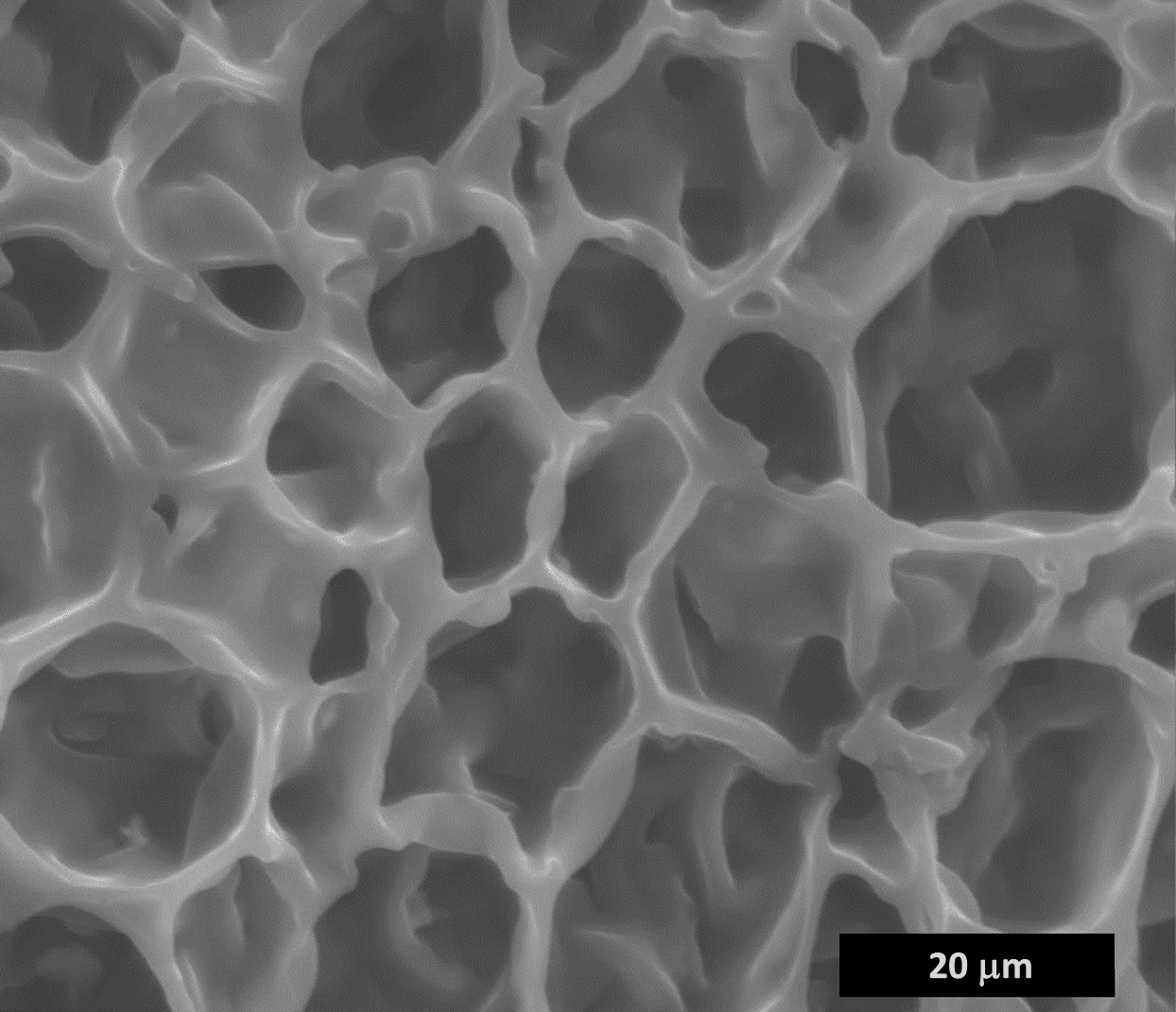
WATER-FILLED ELASTOMERS THROUGH DROPLET MICROENCAPSULATION: RELEASE AND DEGRADATION
PolyHIPEs are highly porous, emulsion-templated polymer monoliths typically synthesized within water-in-oil (W/O) high internal phase emulsions (HIPEs). Biodegradable polyHIPEs are of great interest for industrial and biomedical applications. Recently, as much as 50 wt % biodegradable methacrylate-terminated polycaprolactone (PCL-MA) oligomer has been incorporated within acrylate-based free-radical-polymerized polyHIPEs.1 The presence of the PCL enabled the total disintegration of the polyHIPE during an accelerated degradation test. Amphiphilic surfactants are usually used to stabilize HIPEs. Pickering HIPEs are surfactant-free emulsions stabilized by amphiphilic nanoparticles (NPs) that preferentially migrate to the oil-water interface. The NPs form dense interfacial barriers that resist droplet coalescence. For this reason, polyHIPEs from Pickering HIPEs tend to be less interconnected and more closed-cell-like.2 This closed-cell structure enables the encapsulation of the internal phase droplets in individual polymer microcapsules. The ability to encapsulate and store liquids within discrete, micrometer-scale containers can be used for slow-release applications.
The aim of this study was to produce elastomeric, water-filled, biodegradable polyHIPE monoliths possessing closed-cell structures. A series of Na2SO4 solution-filled polyHIPEs were synthesized using two different types of stabilizing NPs: methacrylate-modified SiO2 NPs (MNPs) and styrene-divinylbenzene polymer NPs (PNPs). PolyHIPE monoliths were synthesized using various PCL-MA/EHA ratios. The typical morphology of such polyHIPEs is shown in the scanning electron micrograph (SEM) in Figure 1. The effects of composition and of different types of NPs on the porous morphology, mechanical properties, rates of release, and degradation were studied.

References
- Lumelsky and M. S. Silverstein, Macromolecules 2009, 42, 1627-1633.
- Gurevitch and M. S. Silverstein, Macromolecules 2012, 45, 6450−6456.
Powered by Eventact EMS